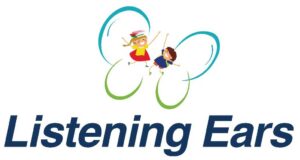
What is Gravitational Insecurity?
Gravitational insecurity is when someone feels really scared about moving around or being off the ground. It’s more than just being a little nervous – it’s a big fear that can make everyday activities scary.
Did you know: Approximately 34% of children aged 8-10 report visual height intolerance (a form of fear of heights) in studies. Among adults, about 28% experience some form of height intolerance or fear of heights. More severe cases classified as acrophobia (extreme fear of heights) affect about 3-6% of the population.
How do you know if someone has gravitational insecurity?
Kids with gravitational insecurity might:
- Feel super scared of heights
- Get upset when their head is upside down
- Not want to use stairs
- Stay away from tall playground equipment
- Worry a lot about falling down
- Feel nervous when their feet aren’t touching the ground
- Have trouble seeing how far away things are
- Sometimes seem wobbly when walking
Why Does Gravitational Insecurity Happen in Children?
Inside everyone’s ears are tiny parts called otolith organs. These little helpers tell our brain things like:
- Which way is up or down
- When we start or stop moving
- How fast we’re moving
If these tiny parts don’t work properly, our brain can get a bit confused.That can make you feel scared of moving or like you might fall, even when you’re safe.
Gravitational Insecurity in Children: Understanding and Management Guide
Category | Details |
What is Gravitational Insecurity? | A fear-based response to movement and being off the ground caused by differences in inner ear otolith organs that process spatial information |
Signs & Symptoms | Fear of heights, distress when upside down, avoiding stairs and playground equipment, fear of feet leaving ground, difficulty judging distances, unsteady walking, moving slowly, refusing climbing activities, fear of elevators, avoiding uneven surfaces, clinging to adults, anxiety about falling |
How to Help | Sensory integration therapy, start with small movements, gradually introduce new experiences, create safe practice environments, work with occupational therapist, use play-based approaches, never force distressing movements, celebrate progress, practice deep breathing, build core strength |
Why Does This Happen? | Inner ear otolith organs don’t process movement and gravity signals correctly, causing the brain to misinterpret spatial information |
Common Triggers | Swings, slides, stairs, ladders, uneven ground, being lifted, tilting head back, elevators, bridges, ramps, spinning movements |
Long-term Benefits | Increased confidence, improved motor skills, better social participation, reduced anxiety, greater independence, ability to enjoy age-appropriate activities |
FAQ's
What is gravitational insecurity?
It’s when your body feels scared of moving or being off the ground, even if you are safe. You might feel wobbly or like you could fall, even during normal activities like climbing, swinging, or stairs.
How do I know if I have it?
You might feel scared on stairs, swings, slides, or even elevators. You might also feel wobbly when walking or not want to climb.
Why do some kids get scared of heights?
Tiny parts in your ears called otoliths help your brain know which way is up. Sometimes they don’t send the right signals, so your brain gets confused and feels scared.
Is it normal to be scared of heights?
A little fear is normal, but gravitational insecurity is stronger and can make fun activities hard, scary, or stressful for kids and affect their confidence.
Can I get better?
Yes! With practice and special exercises, your brain can learn to feel safe when moving or being off the ground.
What is sensory integration therapy?
It’s a fun therapy with games and exercises that help your body and brain work together so you feel safe when climbing, swinging, or moving.
How do I practice at home?
Start with small movements, like standing on a low step, swinging gently, or walking on flat ground. Slowly try bigger challenges as you feel brave.
What will happen if I try this therapy?
You will feel more confident, have better balance, enjoy playgrounds and climbing, and worry less about falling.
